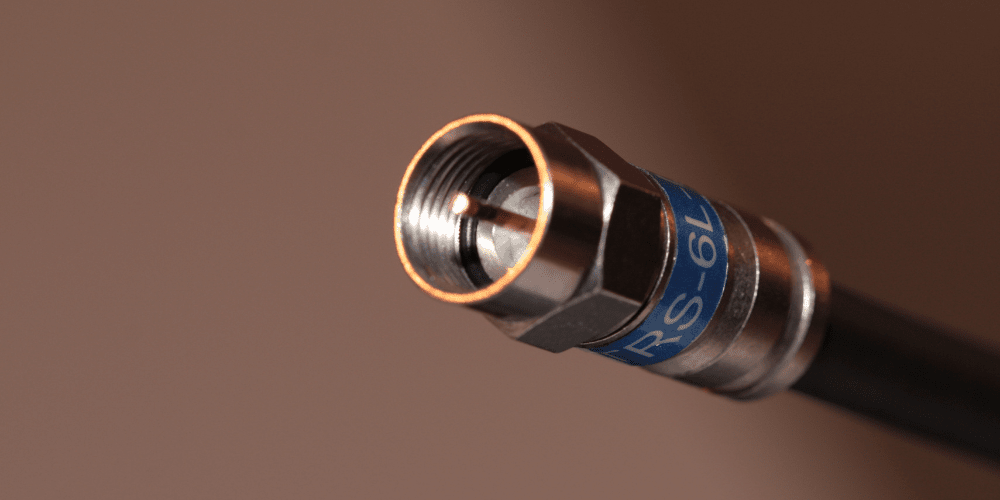What if my home doesn't have coax cable?

In many new-build homes, traditional coaxial cabling is either missing entirely or limited to a single wall plate. This can catch homeowners off guard, especially when setting up a TV or aerial-based system. With the rise of streaming services, some developers assume coax isn’t needed. But is this really the case?
In short: no. While streaming plays a big role in modern viewing, terrestrial television remains relevant, especially for rural areas, older viewers, and anyone wanting simple, reliable, centralised TV. This article explains why coax still matters, what your options are, and how to make RF signals work in modern homes even without coax.
Why new homes are being built with little to no coax
Many new builds prioritise fibre broadband and Wi-Fi infrastructure over coaxial cable. Developers often install Ethernet (Cat5/6) outlets and provide fast internet access as a baseline, assuming streaming will replace traditional TV.
At the same time, there's a push for minimal visible cabling, clean wall finishes, and simplified installations. Some homes get one coax point in the living room, loosely terminated in the loft, but no rooftop aerial and no distribution to other rooms.
But terrestrial TV is still essential
Despite streaming’s growth, millions in the UK still rely on broadcast TV via aerial, delivered over coax. Over 4 million households watch Freeview exclusively. This is especially true in rural areas, where high-speed broadband may be unreliable or unavailable.
Older viewers often prefer Freeview for its simplicity. Everything is in one place with no need to navigate multiple apps or logins. For them, broadcast TV offers a familiar, centralised guide and remote control experience. Streaming, by contrast, can feel fragmented and complex.
Broadcast TV also requires no monthly subscription (beyond the licence fee) and doesn’t depend on data usage or internet stability. In households with limited budgets or no desire to pay for multiple services, Freeview remains the go-to option.
Streaming-only setups can fall short
- Broadband dropouts that disrupt live viewing
- Complicated access, especially for older or less tech-savvy users
- Increased cost, combining broadband and subscription fees
- Delayed live content compared to broadcast channels
These limitations are part of why there’s still strong public support for keeping terrestrial services available. Coax-fed Freeview remains a simple, accessible solution that just works.
So what are your options in a coax-free home?
If your home lacks coax, you still have choices:
- Install an aerial. Many new builds have a coax outlet pre-run to the loft. Installing a rooftop or loft aerial and connecting it to this cable enables Freeview in the main room.
- Use streaming for TV. Services like iPlayer, ITVX and Freely offer live and catch-up TV. This suits many households but assumes stable broadband and a willingness to use streaming devices or smart TVs.
- Add coax outlets. If you want terrestrial TV in other rooms, a professional can extend your coax system, though this may mean running surface trunking or chasing walls.
Or, if your home already has structured network cabling (Cat5e or Cat6), there is now a modern alternative.
Introducing the Blake UK Streamline: RF over Cat5/6
This is why we have developed the upcoming Blake UK Streamline. It is a professional RF over CAT amplifier for situations where the building is wired in Cat5e or Cat6 instead of traditional coax. It takes one F type RF input, for example a terrestrial TV, FM or DAB feed, and turns it into four balanced RJ45 outputs so the same signal can be sent to four rooms over structured cabling.
The unit has high gain, low noise amplification and both gain and slope controls. This means you can match different cable lengths and keep higher frequencies strong, which is important when using CAT cable. It is designed to deliver a clean, stable RF signal to every outlet, even on longer runs.
At the room end you use a small RJ45 to F connector balun and a short F type to TV lead to connect to the television. Streamline does not convert TV into IP. It keeps the signal as RF so the TV tunes channels in the normal way. It is simply a practical way to distribute terrestrial TV and radio around modern homes and small sites that only have network cabling, without having to install extra coax.
Final thoughts
Just because your home doesn’t have coax cable doesn’t mean you have to rely entirely on streaming. Terrestrial TV still plays a vital role and remains the best option for many viewers who value reliability, simplicity or cost-free access to channels.
If you are in a coax-free home, explore whether you have aerial cabling in the loft, consider adding a rooftop aerial, and think about how you want to distribute signals. With products like the Blake UK Streamline, it is now possible to combine the strengths of modern network cabling with the accessibility of Freeview, keeping coax-fed TV available and relevant even in the most up-to-date homes.








 Quick Add
Quick Add